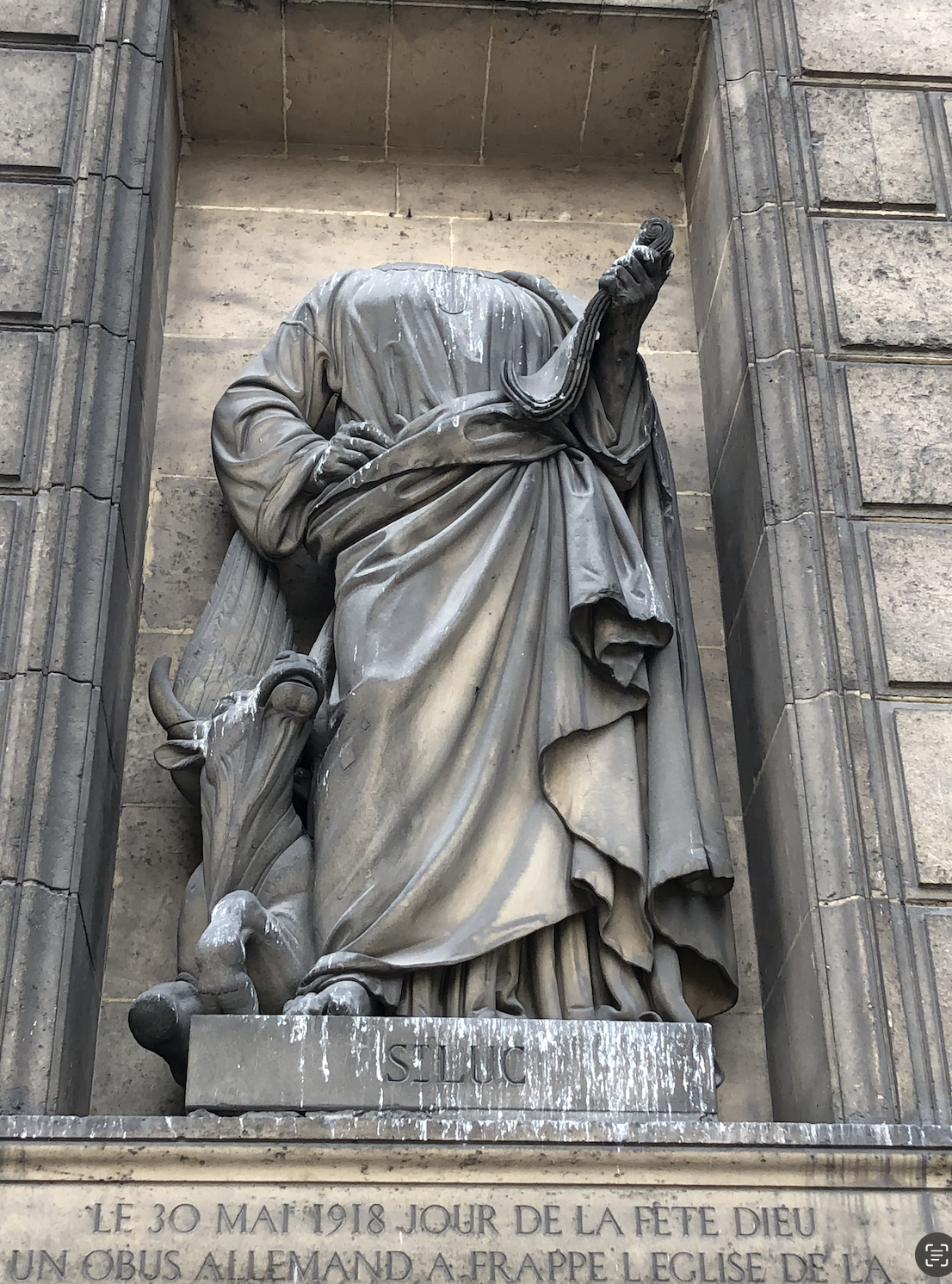The beautiful Neoclassical Eglise Madeleine that crowns the Rue Royale off the Place de la Concorde came from the vision of a few rulers and almost didn’t happen.
It was first conceived by architect Pierre Contant d’Ivry, architect to Duc d’Orleans in 1757. A Latin cross church with a dome inspired by Jacques-Germain Sufflot’s plans for the Eglise Sainte Geneviève, later known as the Pantheon. Louis XV laid the first stone on August 3, 1763, but his death the next year halted any progress.
By the Revolution, the foundation had been laid and stopped on December 31, 1791. Shortly after a wine merchant took it over and in 1806 it was given to the Banque de France but Napoleon would put a stop to that before they could move in.
The next page in the history of the church came In 1806 Napoleon Bonaparte wanted a temple created and dedicated to his army and on the 2nd anniversary of his coronation on December 2, 1806, he signed the decree planning just that. Out of 80 architects, Pierre-Alexandre Vignon was chosen by the Emperor to create a temple based on Greek and Roman architecture.
The building continued until 1811 and once again they ran out of money and the project stopped yet again. In August 1816, Louis XVIII would be the man to bring the project to its conclusion. Originally he wanted a church dedicated to his brother Louis XVI and Marie Antoinette but with his niece and only surviving daughter of Louis XVI, Madame Royale they personally paid for the building of Chapelle Expiatoire.
Architect Jean-Jacques-Marie-Huvé took over after the death of Pierre Alexandre Vignon laying out the vision of the church and incorporating all of the ideas from the architects before them.
The facade with its 52 columns each topped with a gorgeous flowering Corinthian capital gives the church its dominating exterior in the center of the street. On March 20, 1842, the church was open for its first mass, and on October 9, 1845, it was consecrated.
Surrounding the outside are also 34 saints including Sainte Genevieve and Saint-Denis as well as the saints of the Orleans family Antoine, Charles, Ferdinand, Francois, Adelaide, Christine, and Helen. The three archangels are Gabriel, Michel, and Raphael as well as a guardian angel. On the back is where the real treasure is hidden.
Just a little over six months before the end of the” War to End all Wars”, German shells fired at Paris and decapitated a statue. The Germans had begun using the Paris Gun, a long-range gun that was named after the city more so to get into the heads of Parisians than to destroy the city. Large 220-pound bombs could be shot through the air and travel more than 80 miles. They were silently flying through the sky at over 3000 miles an hour until they hit their target. Parisians at the time thought they were being dropped from a Zeppelin.
March 22nd the Paris Gun fired a shell that killed 88 people in the Eglise Saint-Gervais, the single deadliest attack of WWI in Paris. On Thursday, May 30, 1918, a shot was fired and landed just behind La Madeleine. It was the feast day of Jeanne d’Arc, and as the faithful arrived to light a candle, another saint didn’t fare so well. The many Christian saints line the outside of La Madeleine, and on the back, you will find the four evangelists. Matthew, Mark, John, and Luke each with each of their symbols. Matthew and his angel, Mark and his lion, John, and his eagle, and Luke with his bull.
When the shell hit a fragment flew, hit Saint Luke, and took his head right off. They never replaced it, and today you can still see the headless Luke with his adoring bull looking up at him. I love that Paris leaves things like this so you are reminded of a moment in history.




